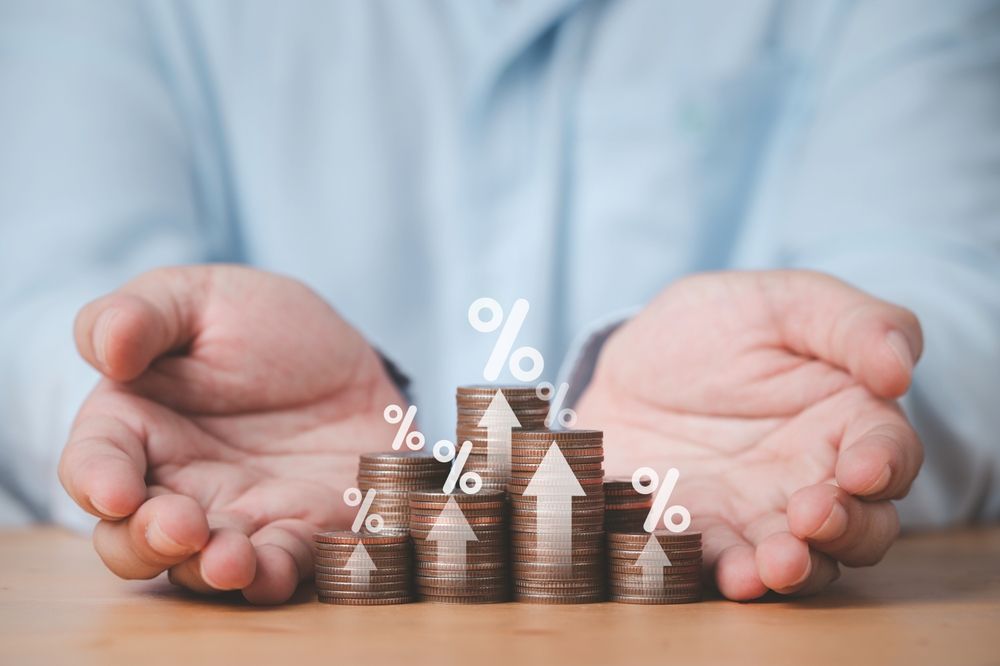
The ebb and flow of interest rates are more than just figures that financial analysts debate over. They are a pivotal factor in the world of personal finance, influencing how your money grows in savings accounts, how much you pay on loans, and how much it costs to borrow money. But what exactly happens when these rates start climbing? Rising interest rates can have a significant impact on your savings and checking accounts, and understanding these effects can help you make more informed financial decisions. In this article, we’ll delve into the implications of increasing rates and how you can navigate this changing landscape to keep your finances healthy and growing.
Understanding Interest Rates and How They Work
To truly grasp the impact of rising interest rates, it’s important to understand what interest rates are and how they work. Interest rates are essentially the cost of borrowing money. They are determined by a country’s central bank – for instance, the Federal Reserve in the United States – and they influence the rates that commercial banks offer to their customers.
The central bank adjusts interest rates to manage economic growth. Lower interest rates tend to stimulate spending by making borrowing cheaper, which can boost economic activity. Conversely, higher interest rates can slow down spending and borrowing because it becomes more expensive, helping to control inflation.
For savers, the interest rate is the return you earn on your deposits in savings and checking accounts. A higher interest rate means more income from your deposited funds, while a lower rate reduces the earning potential on these accounts.
The Direct Impact on Savings Accounts
Now, let’s turn to the direct impact of rising interest rates on savings accounts. The most immediate effect is that banks usually offer higher interest rates on savings products. This means that the money you have in a savings account will earn more over time. It’s a boon for savers as it increases the yield on their accounts, which can help counteract inflation and maintain the purchasing power of their savings.
However, this doesn’t always happen right away. Banks sometimes delay passing on higher rates to savers to maintain their profit margins. It’s important to shop around and see which financial institutions are offering the best rates, as there can be quite a disparity between different banks.
How Checking Accounts Are Affected
Checking accounts traditionally offer lower interest rates than savings accounts, as they are primarily used for everyday transactions and not for growing wealth. With rising interest rates, the yield on these accounts may also increase, but usually to a lesser extent.
Some banks offer high-interest checking accounts that could see a more substantial increase in rates, but these often come with certain requirements like a minimum balance or a set number of transactions per month. It’s worth evaluating if you meet these criteria to take advantage of potentially higher returns.
Long-Term Strategies for Maximizing Your Returns
In a rising interest rate environment, there are several strategies you can employ to maximize the returns on your savings and checking accounts. One approach is to use certificates of deposit (CDs), which typically offer higher interest rates in exchange for locking in your money for a set period. As rates rise, locking in a rate with a CD can be advantageous, but it also means you won’t benefit from future rate increases during the term of the CD.
Another strategy is to consider online banks or credit unions, which often offer higher interest rates compared to traditional brick-and-mortar banks. These institutions usually have lower overhead costs, allowing them to pass the savings on to customers in the form of better rates.
Potential Drawbacks and How to Navigate Them
While rising interest rates can be positive for savers, there are potential drawbacks to consider. Higher rates can lead to increased borrowing costs for mortgages, credit cards, and loans, which can strain your finances if you’re carrying debt. It’s important to assess your debt situation and consider refinancing or consolidating debts to lock in lower rates before they rise further.
Additionally, as interest rates increase, there might be an adjustment period where the rates on loans and credit cards increase faster than the rates on savings and checking accounts. This can temporarily diminish the benefits of higher earning potential on your deposits.
The impact of rising interest rates on your savings and checking accounts is multifaceted, offering both opportunities and challenges. As a saver, higher rates can lead to increased returns, but it’s crucial to stay proactive in seeking out the best rates and considering the right financial products to maximize your earnings. On the flip side, if you have debt, it’s vital to understand how rising rates could affect your repayments and take action accordingly.
In navigating the world of fluctuating interest rates, the key is to stay informed, be adaptable, and make choices that align with your financial goals. With a bit of strategic planning and a watchful eye on the market, you can leverage rising interest rates to bolster your financial health.
